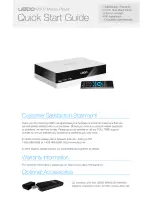suggested
default
path
is
‘WIDE1
‐
1,
WIDE2
‐
1’.
It
is
rarely
necessary
to
use
a
path
greater
than
WIDE3
‐
3
(requesting
three
‘wide’
digipeater
hops),
and
excessive
paths
generate
large
amounts
of
traffic
that
degrade
the
performance
of
the
network.
If
you’re
not
sure
what
path
should
be
used
for
your
local
area,
check
with
a
local
digipeater
operator.
This
field
may
be
left
blank.
TX
Delay
–
All
radios
require
a
certain
amount
of
time
to
stabilize
on
their
transmitting
frequency,
and
receivers
also
require
time
to
lock
on.
This
value
specifies
the
number
of
milli
‐
seconds
the
tracker
should
wait
after
the
start
of
the
transmission
before
it
begins
sending
data.
Allowable
values
are
0
to
1023
milliseconds.
Setting
this
value
too
high
will
keep
the
channel
busy
longer
than
necessary.
Setting
it
too
low
will
prevent
packets
from
being
transmitted
properly.
Finding
the
optimum
value
for
your
radio
may
require
some
experimentation.
TX
Interval
–
How
often
the
tracker
should
transmit.
Allowable
values
are
0
to
65,535
seconds.
This
setting
will
depend
on
your
intended
use.
One
transmission
every
two
minutes
is
accept
‐
able
for
most
mobile
stations.
A
fixed
station
(e.g.,
a
solar
powered
site
reporting
battery
voltage
and
temperature)
might
choose
an
interval
in
the
range
of
5
to
30
minutes.
If
you
require
transmissions
more
often
than
every
two
minutes
or
so,
consider
using
the
Smart
‐
Beaconing™
options
detailed
below.
Special
events
with
many
trackers
and
short
transmission
intervals
should
be
operated
on
a
separate
frequency,
not
on
the
shared
APRS
channel.
An
interval
of
zero
will
disable
timed
transmissions.
Symbol
Table
and
Symbol
Code
–
These
settings
control
the
symbol
used
to
indicate
the
station’s
position
when
drawn
on
a
map.
See
Appendix
B
for
a
listing
of
available
symbols.
Temp.
Adjust
–
Calibration
offset
for
onboard
temperature
sensor.
The
sensor
used
on
the
OpenTracker
is
fairly
linear
across
its
operating
range
and
requires
a
single
‐
point
calibration.
The
easiest
way
to
accomplish
this
is
to
set
a
thermometer
next
to
the
tracker.
Subtract
the
temperature
reported
by
the
tracker
from
the
temperature
shown
by
the
thermometer,
and
enter
that
value
in
this
field.
For
example,
if
the
thermometer
shows
the
temperature
as
26°C
and
the
tracker
reports
29°C,
enter
–3
for
the
adjustment
value.
Quiet
Time
–
This
setting
determines
how
long
the
channel
must
be
clear
before
the
tracker
will
transmit.
Each
unit
is
approximately
1/56
second.
Setting
the
quiet
time
to
zero
causes
the
tracker
to
ignore
detected
traffic.
Text
–
This
is
a
freeform
text
field.
Anything
entered
here
will
be
displayed
in
the
comment
portion
of
the
transmission
or
in
a
separate
status
packet,
as
selected.
Keep
comments
as
brief
as
possible
to
avoid
wasting
channel
capacity,
or
use
the
‘Every
__
Transmissions’
option
to
reduce
how
often
the
text
is
sent.
Altitude,
Course/Speed,
Time
–
When
checked,
report
these
values
as
indicated
by
the
GPS
receiver.
The
timestamp
may
be
in
Days/Hours/Minutes
or
Hours/Minutes/Seconds.
OpenTracker Manual - Version 1.05 – 6/25/06
page
11
of
23


















